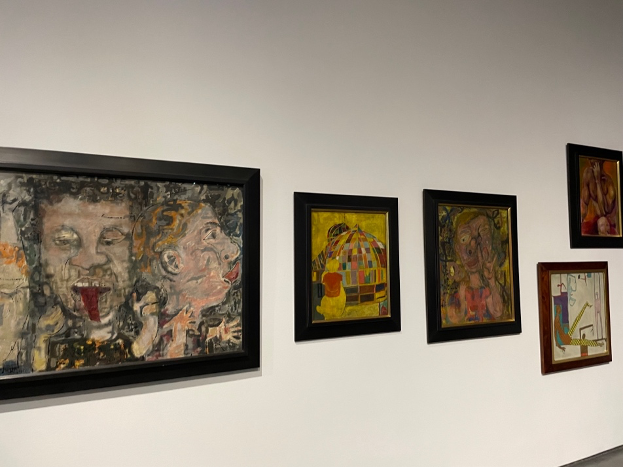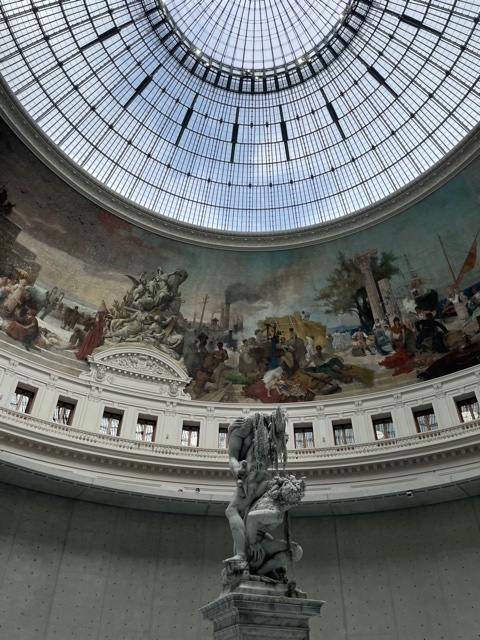Look deep into nature, and then you will understand everything better.
— Albert Einstein
Essay just published on Medium:
View at Medium.com
Gone. Vanished. Almost as quickly as cicadas swarmed the Washington, DC, area this spring, no trace remains, and my late summer, early evening strolls are not the same. I hear robins chirping and crows cawing as insects hum and occasional fireflies flicker, but I miss the crescendo of cicada mating songs in surround sound.
Just as we began to emerge from our Covid-19 hibernation, cicadas had gone underground. Their brief visit with us left holes in the earth from which they surfaced, empty shells scattered and crunchy under foot, and dismembered wings. But my impressions of them persist.
During their time with us, corpses littered the landscape. Squished, smashed, or compressed corpses sideways or straight up, wings splayed or detached. I still see their perfectly formed, gossamer wings crinkly to the touch often separated and sprinkled about, shimmering in the sunlight, but now silence prevails. How long did we have together?
I contemplate our collective lost time, our transient nature, our legacy. And I look to cicadas for inspiration.
For centuries cicadas enlivened literature and art, music and sculpted objects. Numerous cultures revered them, drawing philosophical and moral lessons from their seventeen-year cycle of existence. Aristotle in his History of Animals reflects on cicadas, observing their life as symbols of resurrection and immortality. Among his other suggestions, he recommends snacking on them — a delicacy he enjoyed — and boiling them to cure bladder disorders. (No thank-you, I did not feast on them despite numerous food writers’ recipes.) Socrates relates his myth of the cicadas, wherein the music of ancient Muses enchants men who twirl and dance until they turn into cicadas, whose lyrical song suggests art and erotic love. In Aesop’s Fables, a cicada outwits a fox with a leaf, as a substitute for dinner. Journeys of self-discovery, change, and possible upheaval — professional, political, and personal — are embodied in the lives of cicadas.
So, I gaze upon them in my mind: Martian-red beady eyes, Halloween orange-veined cellophane-thin wings — aerodynamically designed for flight. As someone who has no particular interest in nor love for insects, I was fascinated, a strange feeling for me. Having worked at the Smithsonian for twenty years, I always wondered how entomologists could spend their whole career studying one creature. Mostly, I avoid insects. Though gnats and mosquitos love feasting on me, the love is not reciprocal. Bugs annoy me. But, inexplicably, billions of Brood X appear and I’m captivated.
I don’t remember my fondness for cicadas when last they surfaced. But I was seventeen years younger then. Yesterday’s annoyance is today’s fascination. Today, I think about them. I saw cicadas clinging to trees sucking sap, I felt cicadas buzz and breeze pass, harmlessly bumping into me, always whizzing away quickly. I watched them dive-bomb to the ground, searching. Were they crawling away from predators or creeping toward their demise? Did they find the lovers they sought?
Their deafening evening symphony desperately seeking a mate had thrilled me and resounds still in my head, though gradually their song diminished, their chorus missing members. I hear only faint echoes now of their vibrating membranes from their magical life. Was their death violent or peaceful? No matter. It is Nature’s way, this odd life cycle. Their species will revive underground as it has for eons.
I still conjure their multitude of silent wings in their wake. I gingerly pick them up and arrange artistic patterns. Look, I can create a dragonfly, a sea turtle, a tulip, or a work of abstract art to contemplate. The wind blows them away. But impressions remain.
As this round of cicadas edged toward their end, I wondered about mine. Will I be here when they re-emerge? My older brother just died unexpectedly at 73. Compared to a cicada’s seventeen-year stint, long, but still too short. I have a granddaughter on the way, will I see her graduate high school? Already I miss all that I once knew.
But I have hope. Despite our losses, I see life stirring around me again, resurfacing stronger from our COVID-19 hibernation. A celebration of our own enduring humanity and our generational changes. As a newborn cries, Nature constantly renews us with radiant sounds.




























You must be logged in to post a comment.